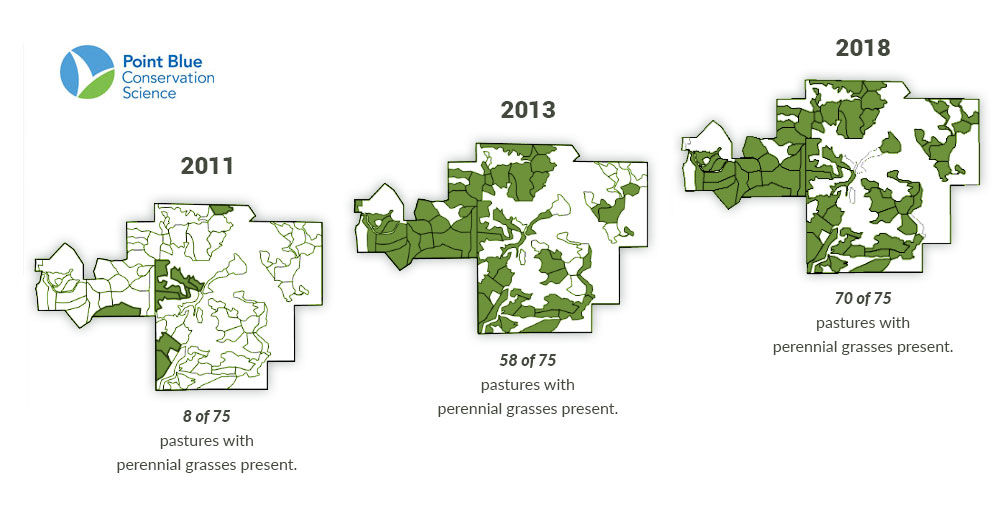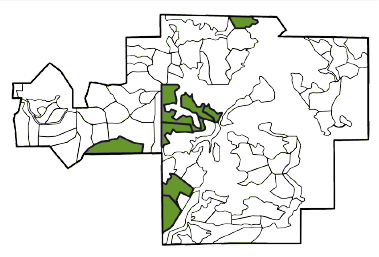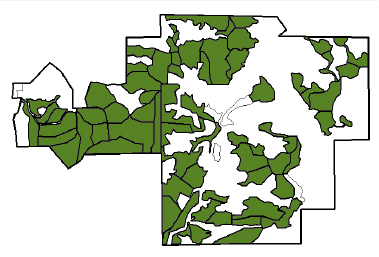As part of our regenerative management program, Point Blue Conservation Science collects pasture vegetation data every summer at TomKat Ranch.
Native Perennial Grasses Continue Expanding Across TomKat Ranch

By Hayley Strohm and Kevin Alexander Watt
As part of our regenerative management program, Point Blue Conservation Science collects pasture vegetation data every summer at TomKat Ranch. The surveys began just before we started practicing planned grazing in 2011 and baseline surveys detected native perennial grasses in only 8 of 75 pastures on the ranch. By 2013, native perennial grasses had expanded dramatically across the ranch to 58 of 75 pastures and we were excited to share those findings in a research update published by Point Blue called Restoring Native Perennial Grasses by Changing Practices in Central Coastal California.
Recently, we were inspired to learn that the latest 2018 monitoring data shows a continuation of this pattern. New surveys show that we now have native perennial grasses in 70 of 75 pastures on the ranch! You can check this out visually in the graphic above; green pastures indicate the presence of native perennial grass in 2011, 2013, and 2018.
As regenerative managers, our next question when looking at these data is whether the positive ecological shift is connected to changes in our grazing management. As you will see, this becomes quite a complicated story. But before we dig into our management history, it’s important to explain what native perennial grasses are and why we at TomKat (and Point Blue) think they are important.
Hundreds of years ago, California’s grasslands contained an immense diversity of native wildflowers and native perennial grasses. When Europeans colonized California, they brought many of their seeds with them. One group, in particular, the annual grasses (such as wild oats, soft chess and ripgut), spread like wildfire throughout California’s grassland ecosystems. Today, our grasslands are dominated by short-lived, short-rooted, annual grass species, rather than longer-lived, deeper-rooted perennial grasses that provide critical ecosystem services in our Mediterranean climate.


Comparison of observed native perennial grasses 2011 vs. 2018
The grasslands at TomKat Ranch are no different. While non-native annual grasses are important livestock forage, native perennial grasses provide a variety of important grazing and ecosystem benefits that annuals do not. This includes a longer green season, deeper roots that can infiltrate and hold more water, year-round ground cover, increased nutrient availability for plants and livestock, and essential habitat for grassland animals such as our beloved Grasshopper Sparrows.
Given all of this, increasing native perennial grasses has been a top priority for our regenerative grazing management and an explicit goal in our grazing plans since it began in 2011. In large part, this effort has focused on using portable electric fence to precisely move our herd across the landscape to control the location, timing, intensity, and duration so as to graze and prune these grasses at just the right time and season, and then provide the appropriate amount of recovery time.
Our efforts on the ground are guided by the extensive effort we put into planning our grazing and integrating Point Blue’s yearly monitoring data. For native perennial grasses, for example, research indicated that they preferred winter grazing followed by long periods of rest. We used that information to develop a specialized grazing strategy for promoting the perennial grasses, which involves short, high-intensity grazing events in the winter (to help reduce competition from annual grasses) followed by longer rest periods during the spring and summer. On the ground each day we observe the regrowth of our perennial grasses and do not re-graze them until the plants have a chance to recover in order to protect them from negative impacts of overgrazing. Instead of following a set rotation or schedule, we try to read our land and monitoring data as we go and make decisions based on what we see fits for this dynamic and complex system.
As is probably obvious by now, this is a complicated process that involves an immense amount of variation, both on the human and ecological side. Through the Ranch Data Project, Point Blue monitors vegetation, soil, water, and bird populations to provide valuable feedback about how management can affect the ranch’s ecosystems. In particular, Point Blue scientists are working with TomKat Ranch to understand the connections between our grazing management and the expansion of native perennial grasses we are seeing across the ranch. At this time, we cannot scientifically attribute this positive ecological outcome directly to changes in grazing management given the many variables that affect plant growth, however, we are delighted to participate in the renewal of our native California grassland ecosystem and to share our experiences with the aspiration that native perennial grasses will continue to spread.